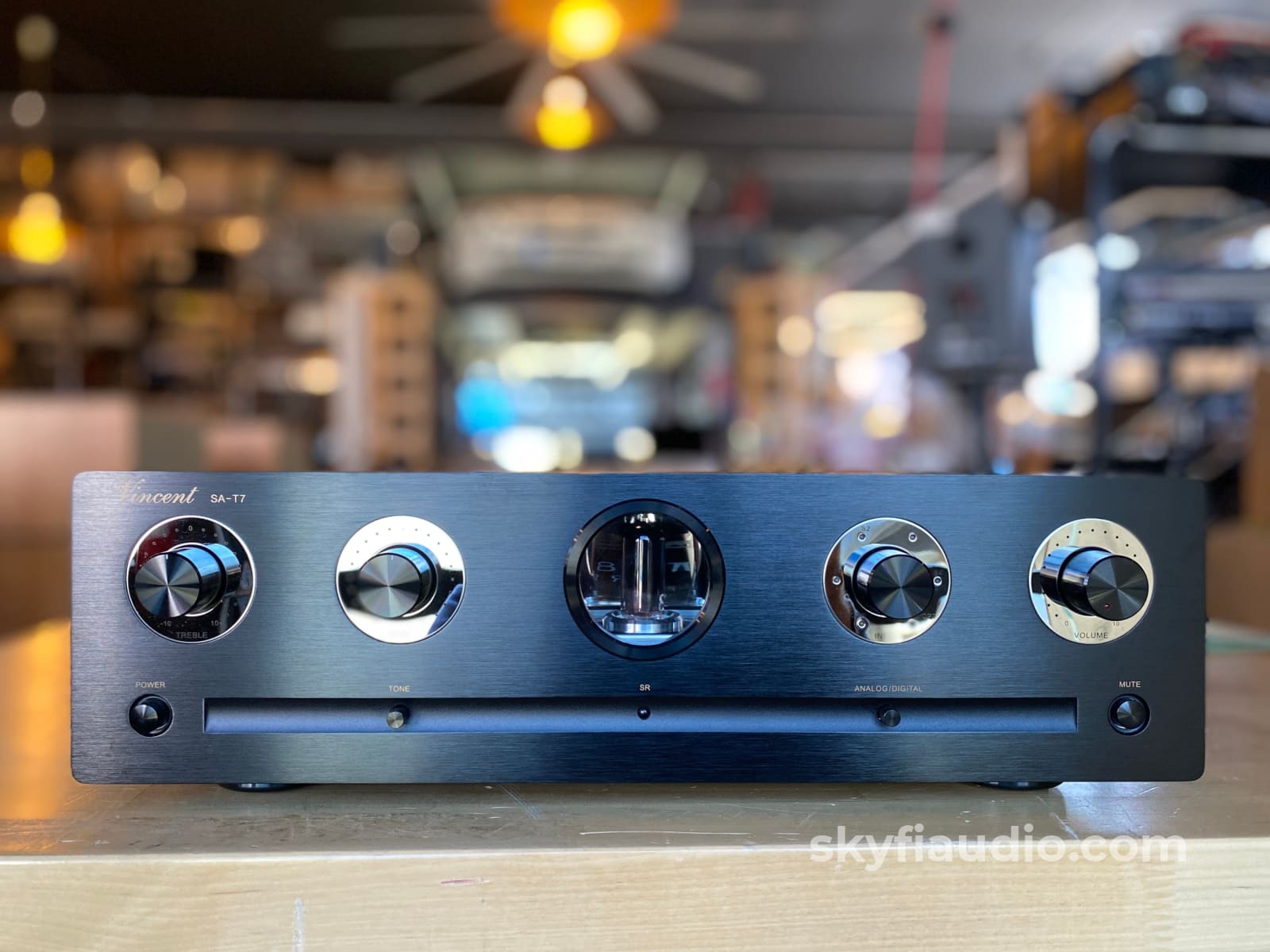
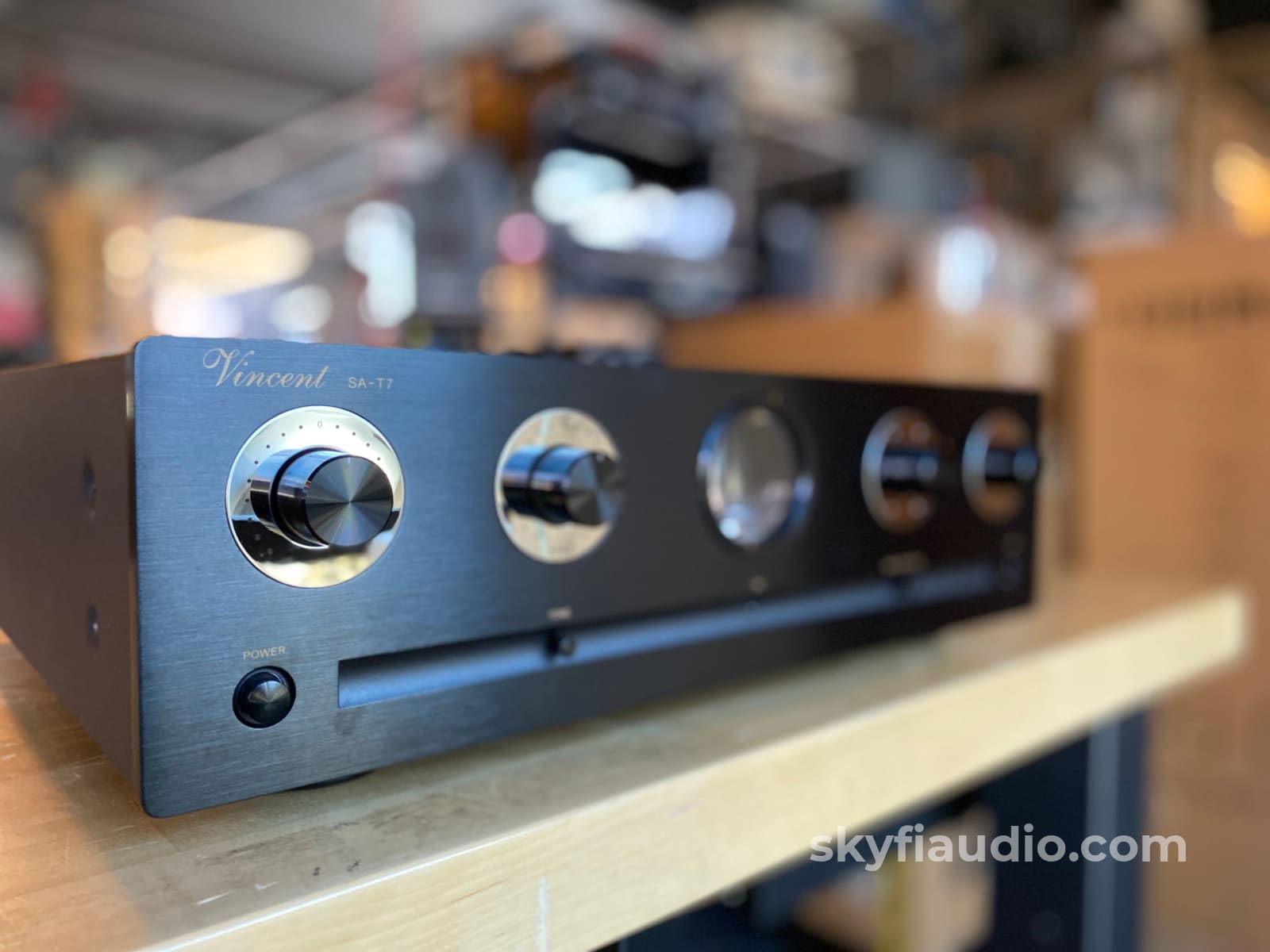
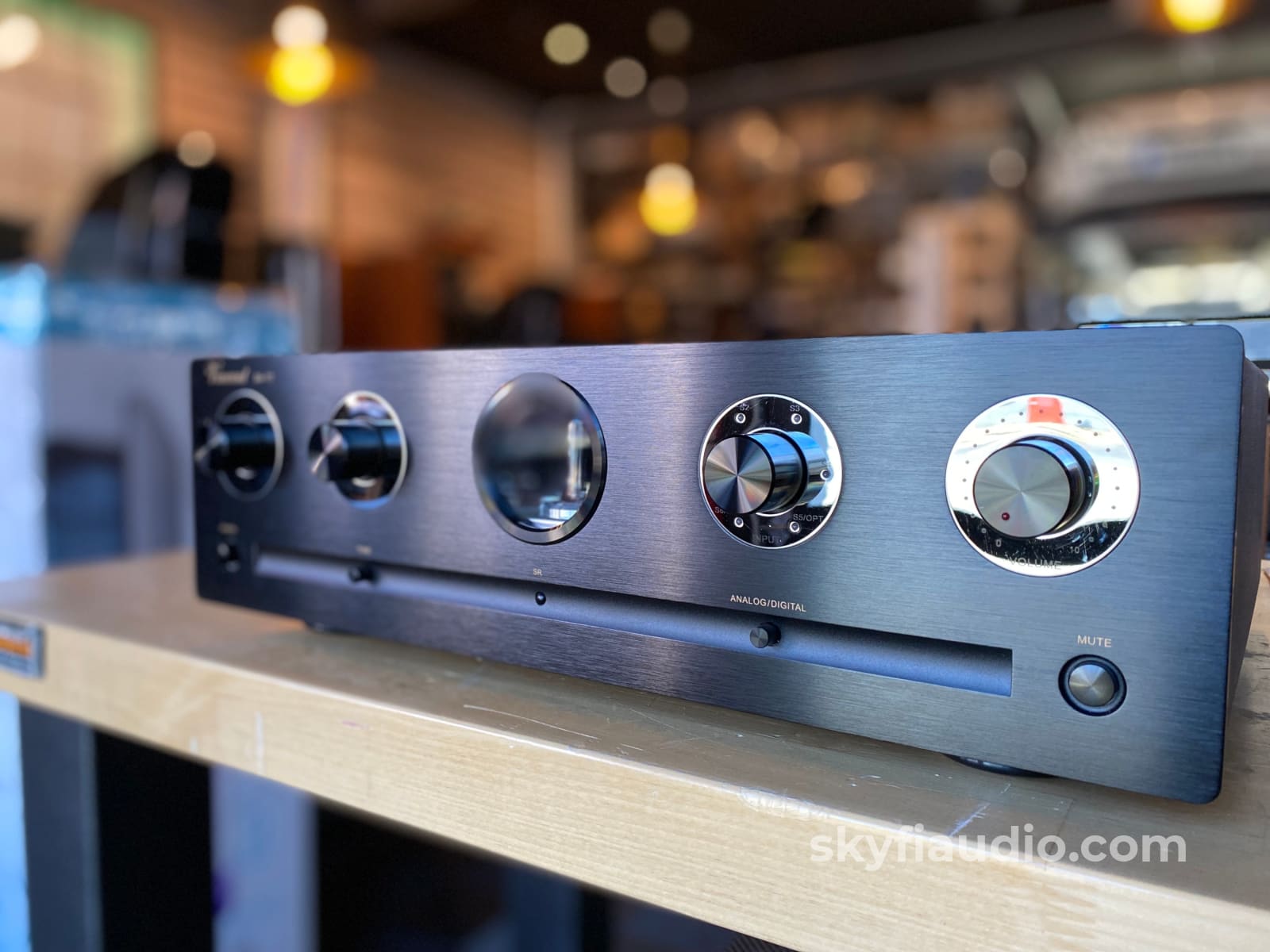
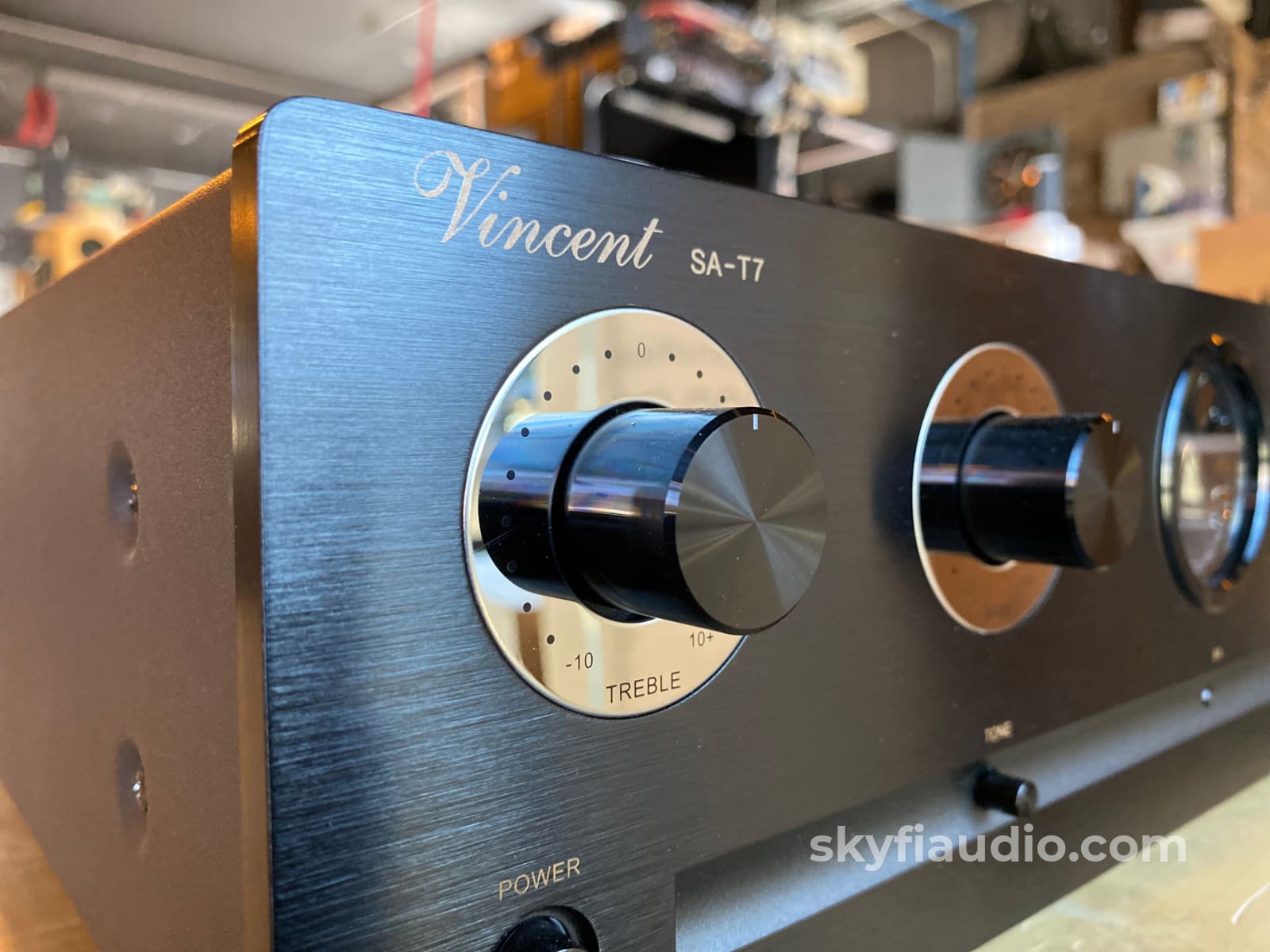

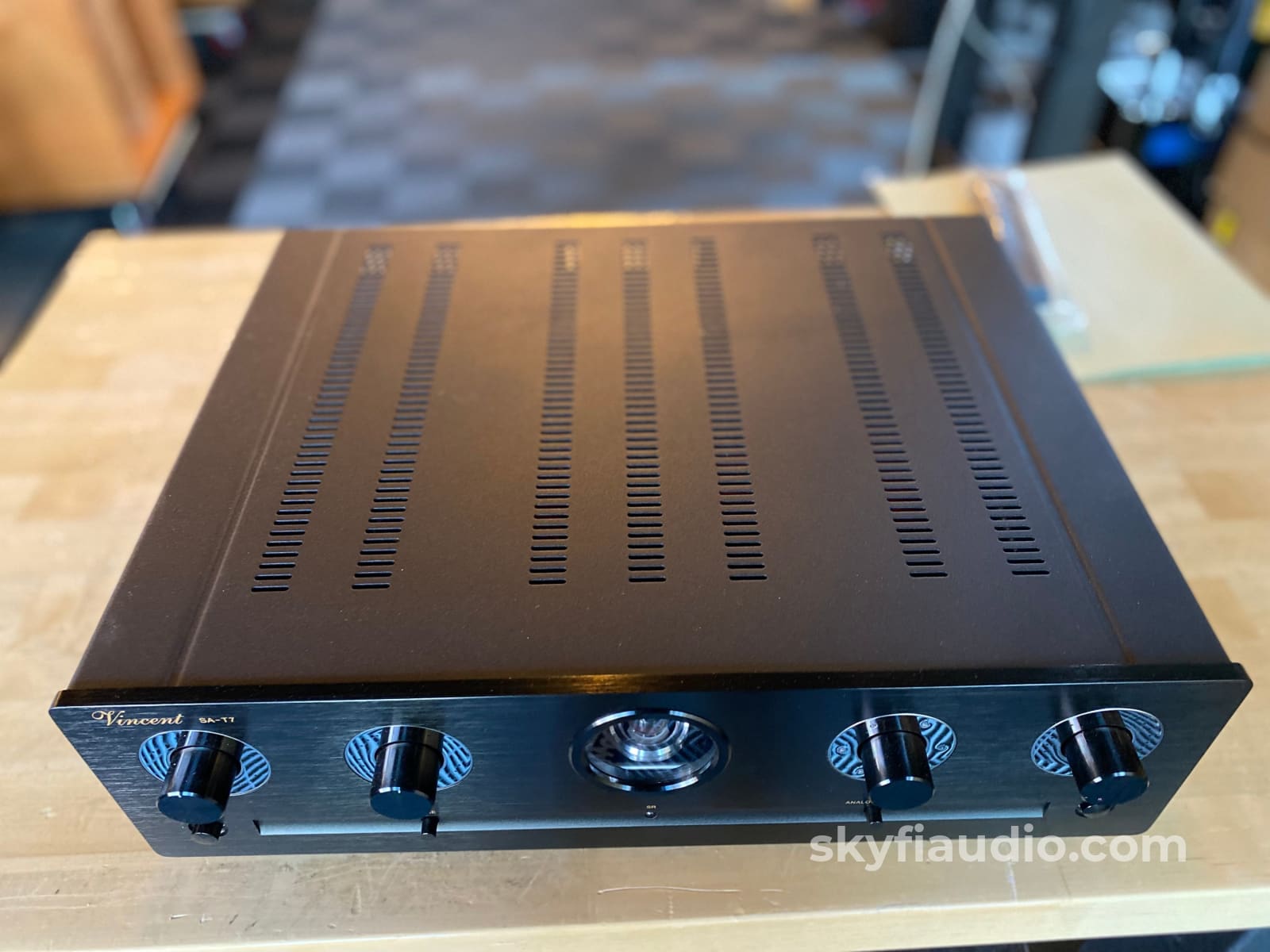
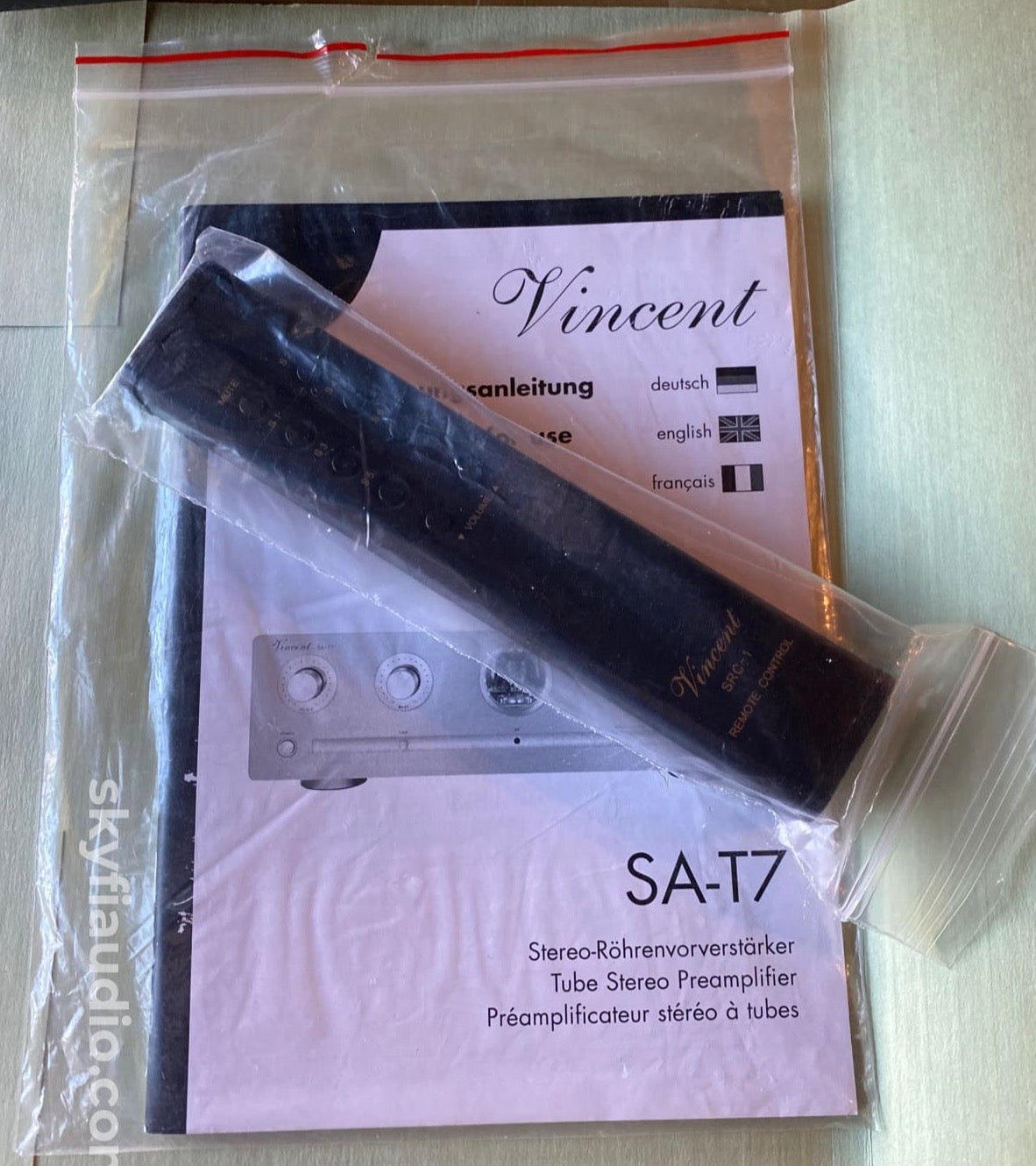
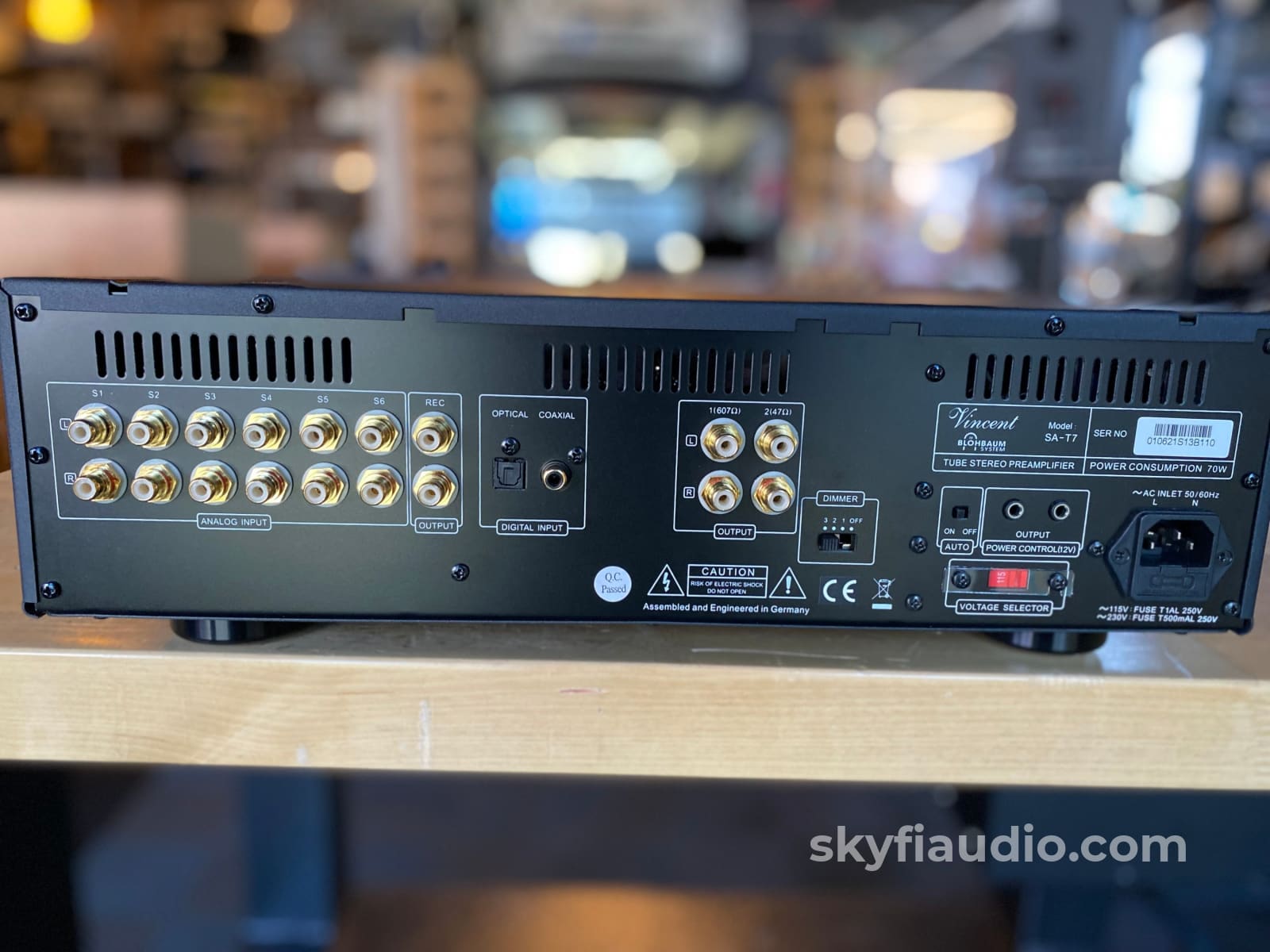
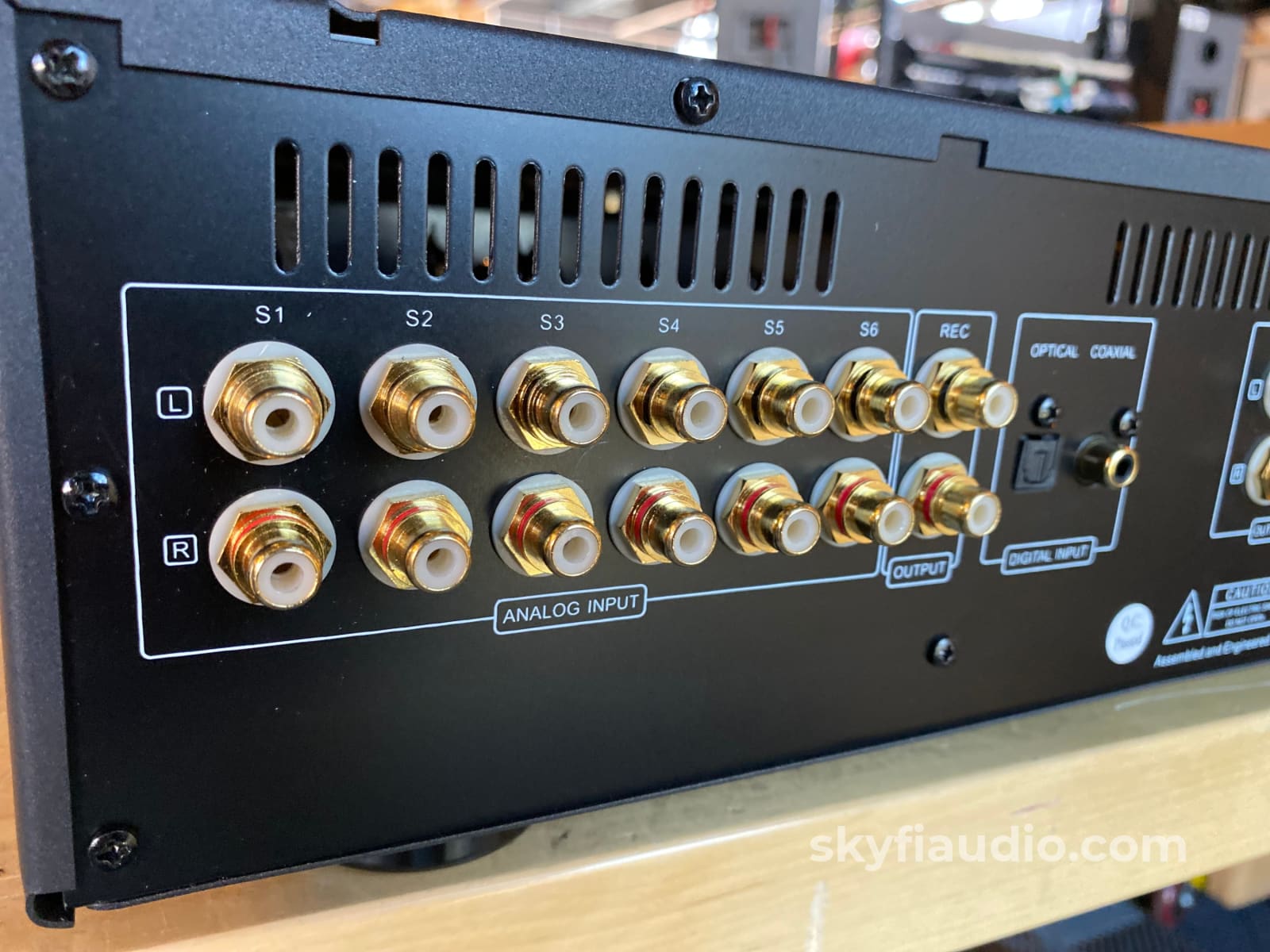
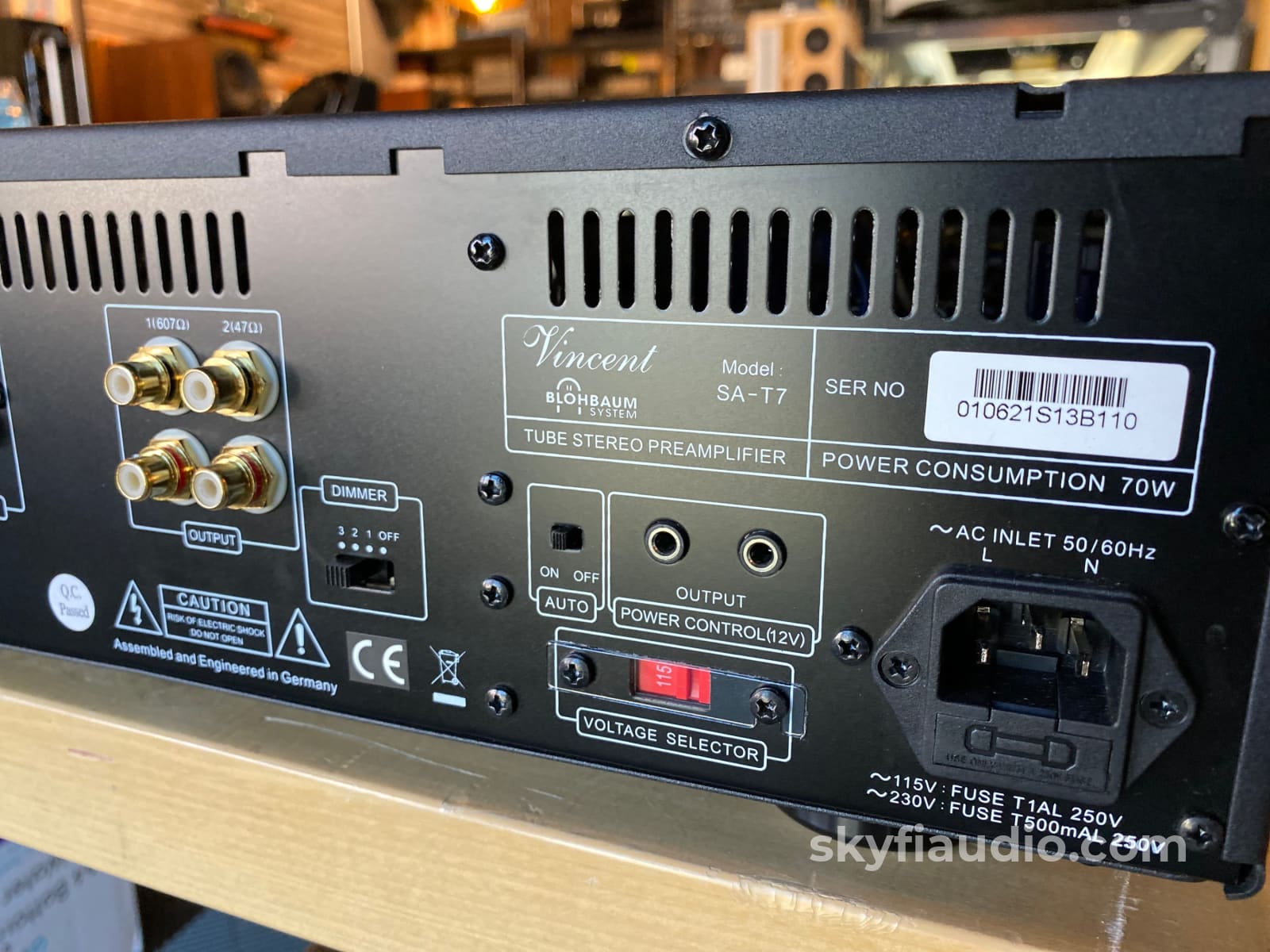
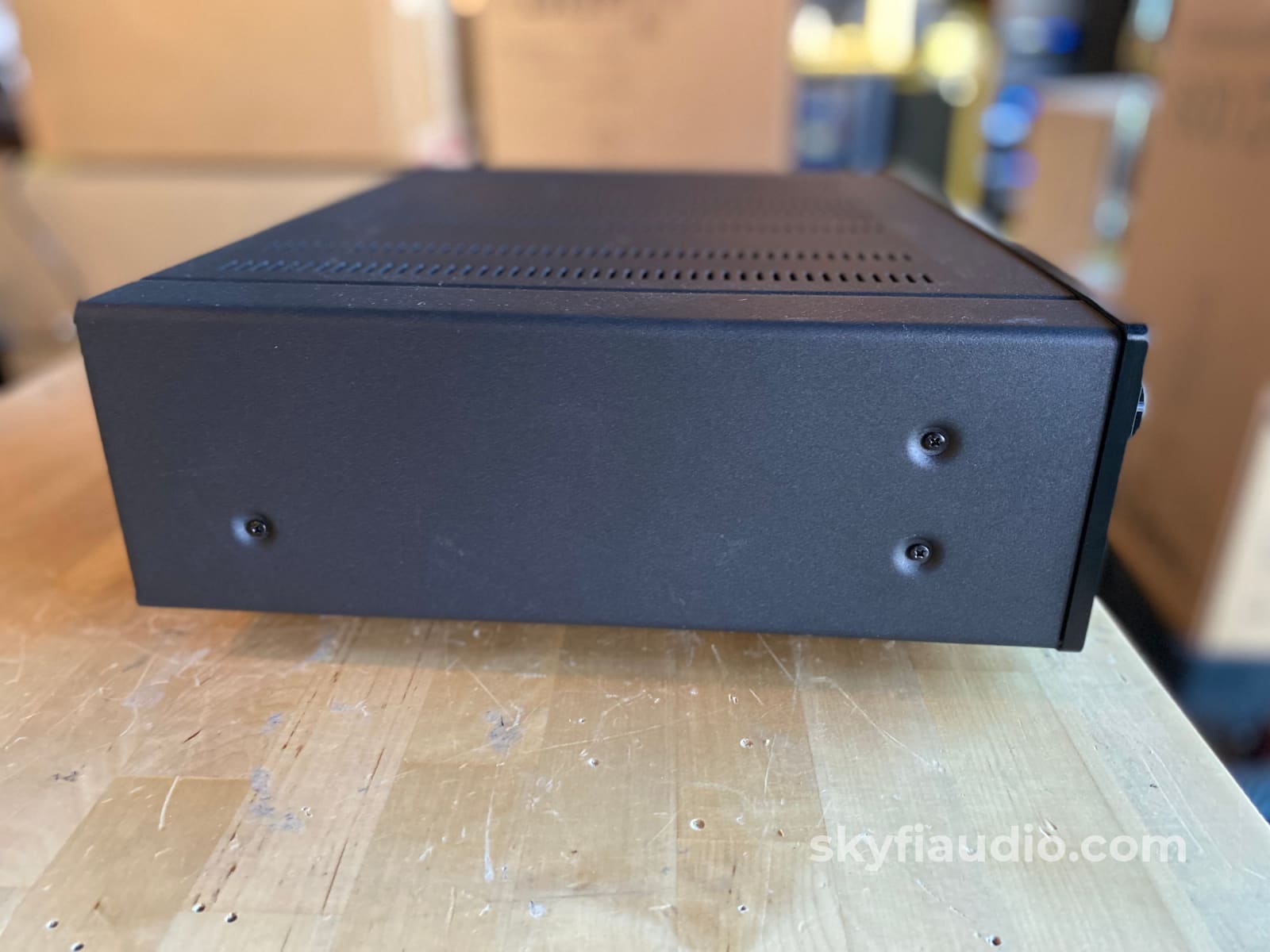
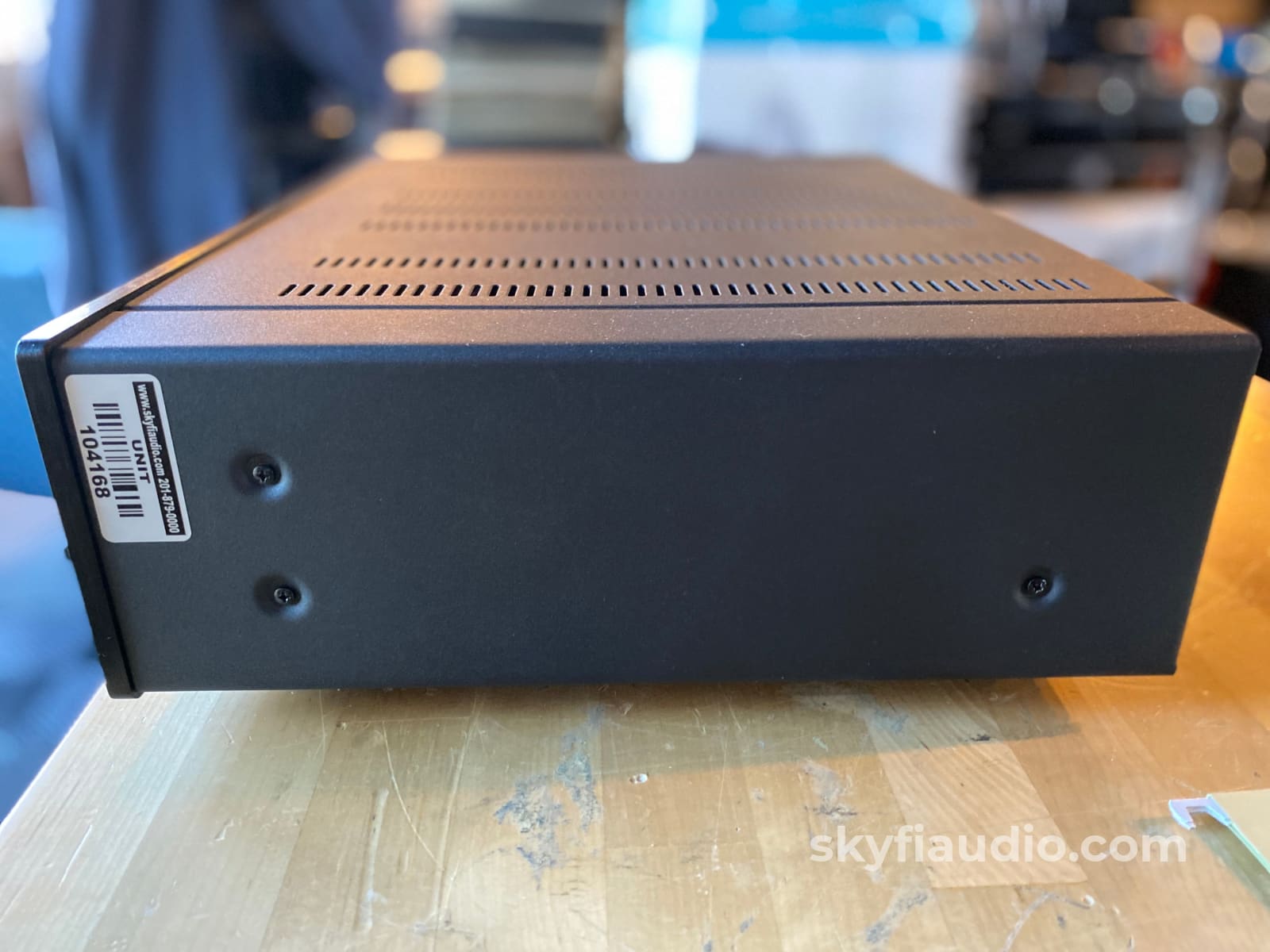
Vincent SA-T7 Tube Stereo Preamplifier With DAC - Made in Germany
Free Shipping on Most Electronics - Excludes Speakers and Items Requiring Freight - Contiguous U.S. Only
Pickup currently unavailable at SkyFi 479

Vincent SA-T7 Tube Stereo Preamplifier With DAC - Made in Germany
SkyFi 479
479 South Broad Street
Glen Rock NJ 07452
United States
Gorgeous tube preamp made in Germany.
Looking and sounding like new. Super versatile as it includes a built-in DAC.
Comes with power cord, remote, and manual.
Recommended Cables:
Kimber Kable - RCA Interconnects - Better
Kimber Kable - RCA Interconnects - Best
Kimber Kable - Coaxial Digital Interconnect
Kimber Kable - Optical Digital Interconnect
Kimber Kable - Power Cords - Better
Kimber Kable - Power Cords - Best
More from Vincent:
Combines Highly Linear Amplification with Extremely Low Noise
Vincent Audio's SA-T7 preamp combines highly linear amplification with extremely low noise and excellent speed for the best possible music enjoyment. It achieves this winning combination thanks to Vincent's novel and proprietary BestPentode vacuum tube circuit technology, which is used for the first time as a standard feature together with the clever new Vimala power source coupling system for exceptionally pure audio.
Not only does this new technology squarely position the SA-T7 in the vanguard of tube components, the SA-T7 also has a built-in DAC. This allows you to enjoy digital sources along with analog.
"Sound Quality on a High Level"
"The Vincent SA-T7 preamp and the SP-T700 monoblock form a pre/power amp combination with the highest level of workmanship," reports Stephan Schmid in his review for i-fidelity.net. "Designed with smart technical innovations far off the beaten track, they deliver sound quality on a high level."
Placing New Demands on Audio Gear
Modern music sources place completely new demands on the performance of preamplifiers and power amplifiers. Conventional (classic) vacuum tube circuit technology using the tried and true ECC81, ECC82, ECC83, or ECC88 tubes, for example, does not fully exploit the potential of vacuum tube technology. Tubes are capable of far more in terms of audio reproduction that they are often given credit for. And far from being outmoded by today's hi-res music, tube circuitry when properly engineered by Vincent Audio can bring out the best in everything from jazz to hip-hop to symphonies to movie soundtracks.
New Developments in Tube Technology
Vincent asked itself the question, is it possible to improve vacuum tube technology in hi-fi equipment so that it takes a quantum leap compared to what was available before? It's probably no surprise that Vincent's answer was yes. With the SA-T7 the German company has developed a preamplifier that raises the purity of the amplification of delicate music signals to a level of authenticity never conceived of before with tubes. This was made possible with a patent pending circuit technology, which is fundamentally different from classic tube circuitry.
Vincent's innovation has avoided the usual shortcomings of vacuum tube technology. Thanks to the newly developed BestPentode circuit, developed by esteemed engineer Frank Blöhbaum – who designed and managed the production of the award-winning Thorens TEM 3200 power amp and TEP 3800 preamp – the current-distribution noise problems which have been typical of pentode-based designs for years are now a thing of the past.
The BestPentode circuit technology boasts far higher amplification with less noise than comparable triodes. The 6H9P and 6H51P frame grid pentode tubes used in the SA-T7 (one pair of each) can exploit its potential here to the full. The vacuum tube is a NOS (New Old Stock) component stored in old stocks fresh from the factory. The original use of these tubes was to amplify high-frequency signals in telecommunications circuitry which had to operate 24-hours a day, seven days a week. The guaranteed life for these tubes, developed in England for professional continuous use, was 10,000 hours. So this is a highly robust and dependable vacuum tube.
Analog and Digital Connections + Built-in 24/192 DAC
The SA-T7 includes connections for a wide range of audio sources, accommodating both analog and digital. Inputs consist of six stereo RCA-type connections, one Toslink optical digital connection, and one coax digital connection. The digital inputs let you enjoy two-channel audio from Blu-ray players, streamers, set-top boxes, CD players and much more. Inside the SA-T7 is a PCM 5100-based DAC providing 24-bit/192 kHz performance. It will play WAV, FLAC, APE, LPCM, MP3, ACC, AC3, and WM music files.
On the output side, the Vincent offers two stereo RCA-type preamp outputs along with one stereo RCA-type 'Record' out.
Precision Bass and Treble Tone Controls
The impedance converter stage was created using a type 6S3P-EV grid triode tube – a Russian military vacuum tube formerly used in MIG airborne radar systems and also designed for a long service life. The extremely pure audio transmission is ensured by the low-noise power supply couplings of the BestPentode stage. In fact, a special module was developed for this purpose, which Vincent calls the Vimala – Sanskrit for "pure, transparent, clear."
Another gain stage, comprising the 6H9P, 6H51P, 6S3P-EV, and Vimala modules, gives you control over the precision regulation of treble and bass, so that you can tailor the sound quality to your personal listening requirements. The tone controls can, of course, be bypassed if you prefer to listen to the purest music signal.
Outputs Designed for Critical Listening
Thanks to the extremely low output resistance of this novel amplifier technology – typically less than 1 Ohm – the amplifier outputs were designed with a purely resistive behavior. This ensures uniform transmission across the entire frequency range and compatibility with the finest cables and interconnects for critical listening. Two different output resistances (50 Ohm and 600 Ohm) are available.
Made in Germany
Critical circuit boards used in this component, including the patent pending Vimala circuitry, are assembled and hand-tested in Germany by designer Frank Blöhbaum. No one else has access to this proprietary circuitry, which is a Vincent Audio excusive. Final assembly and testing are also conducted by Frank Blöhbaum in order to maintain the highest possible level of quality in the finished product.
Vincent is justifiably proud of the SA-T7. It represents the pinnacle of the company's long-term experience in the production of innovative vacuum tube amplifiers.
- Frequency Response: 10Hz – 100kHz +/- 0.1dB
- Output Voltage: 3V
- T.H.D.: <0.001% (1kHz, Output Voltage 2Veff on 10 K Ohm)
- Amplification: typ. 13.3 dB (Volume control max. Gain)
- Input Sensitivity: 430mV (for 2V Output Voltage)
- Signal-to–Noise Ratio: typ. >100dB (A)
- Impedance: >22kOhm
- Dimensions: 16.9" wide x 5.3" high x 14.5" deep
- Weight: 18.7 lbs.
The SkyFi Testing Process for Tube Preamplifiers:
We start with a visual inspection of all internal components to make sure that there are no signs of heat stress or damage. Capacitors are checked for telltale signs of predictive failure including bulging, shrunken wrappers, or physical leakage. We also inspect the PCB’s for discoloration from resistors or transistors that may have been running hot. On vintage units we often spot check select capacitors for value and ESR.
If the preamp passes visual inspection, we move on to a full test of all of the tubes. We use an Amplitrex AT-1000 Tube Tester which is capable of testing both emission and Gm with a high degree of accuracy. We document the results of each tube and replace any weak or suspect tubes before proceeding. When we power on tube preamplifiers for the first time we usually use a variac and current limited AC supply and slowly raise the voltage up to nominal mains level while monitoring plate, screen, filament, and negative bias supply voltages where applicable.
When we first power on a preamplifier we connect its RCA output to a Sencore PA81 Power Analyzer which simulates real world loading conditions and gives us an oscilloscope interface. The first order of business is checking that the volume control works smoothly throughout its entire range with acceptable channel balance. This is accomplished by feeding a 1KHz sine wave into one of the preamp’s line level inputs while monitoring the preamp’s output on an oscilloscope. We then switch to a 1KHz square wave to test the tone controls, loudness function, and filters where applicable. During this step we are watching for equal alteration of the test signal by both channels. This also helps us identify dirty controls that will need treatment. Once the basic line stage functions are verified, we test each input individually. This is especially important for devices that use relays to select their sources. If the preamp is equipped with a phono stage we test that as well. We use an inverse RIAA filter which allows us to feed a reference test signal into the phono input with the proper RIAA equalization and level. A square wave or sine sweep is used to verify that the device’s phono stage is faithfully reproducing the RIAA curve. If the preamp under test has balanced inputs and/or outputs these are tested as well.
We finish up our bench testing with a listening test with our bench amplifier and reference speakers. During this test we check for hum or hiss that may not have shown up in earlier testing. We also check that all of the tone controls and filters perform as expected. If the preamplifier has remote control functions these are also tested. Preamps with tube circuits or complicated power supply topologies are connected at our long term test rig for extended stress testing under real world conditions.
If the unit passes all of these tests it is moved to our long term testing rig where we simulate real word operating conditions for 6-8 hours. For tube preamps we like to run this test at least twice. This allows us to monitor the unit for signs of thermal runaway or intermittent issues that only crop up when it has fully come up to temperature. We find this step to be essential, especially for vintage units.
|
Item |
Included |
|
Original Box |
Not Included |
|
Manual |
Yes Included |
|
Remote |
Yes Included |
|
Cables |
Yes - Power Only |
|
Physical Condition (Info Here) |
8 / 10 |
|
Working Condition |
10 / 10 |
Choose options
